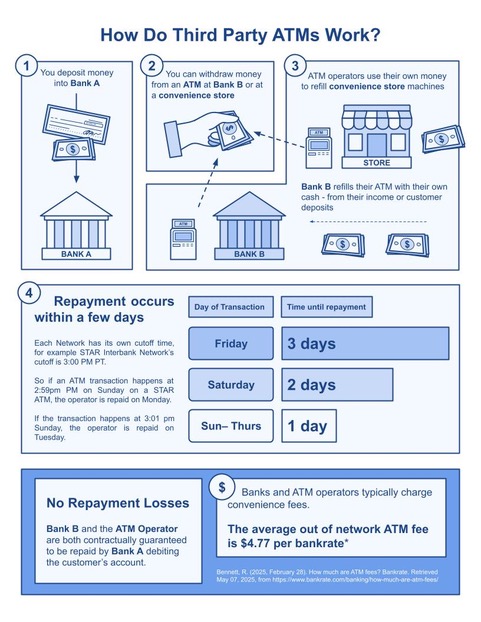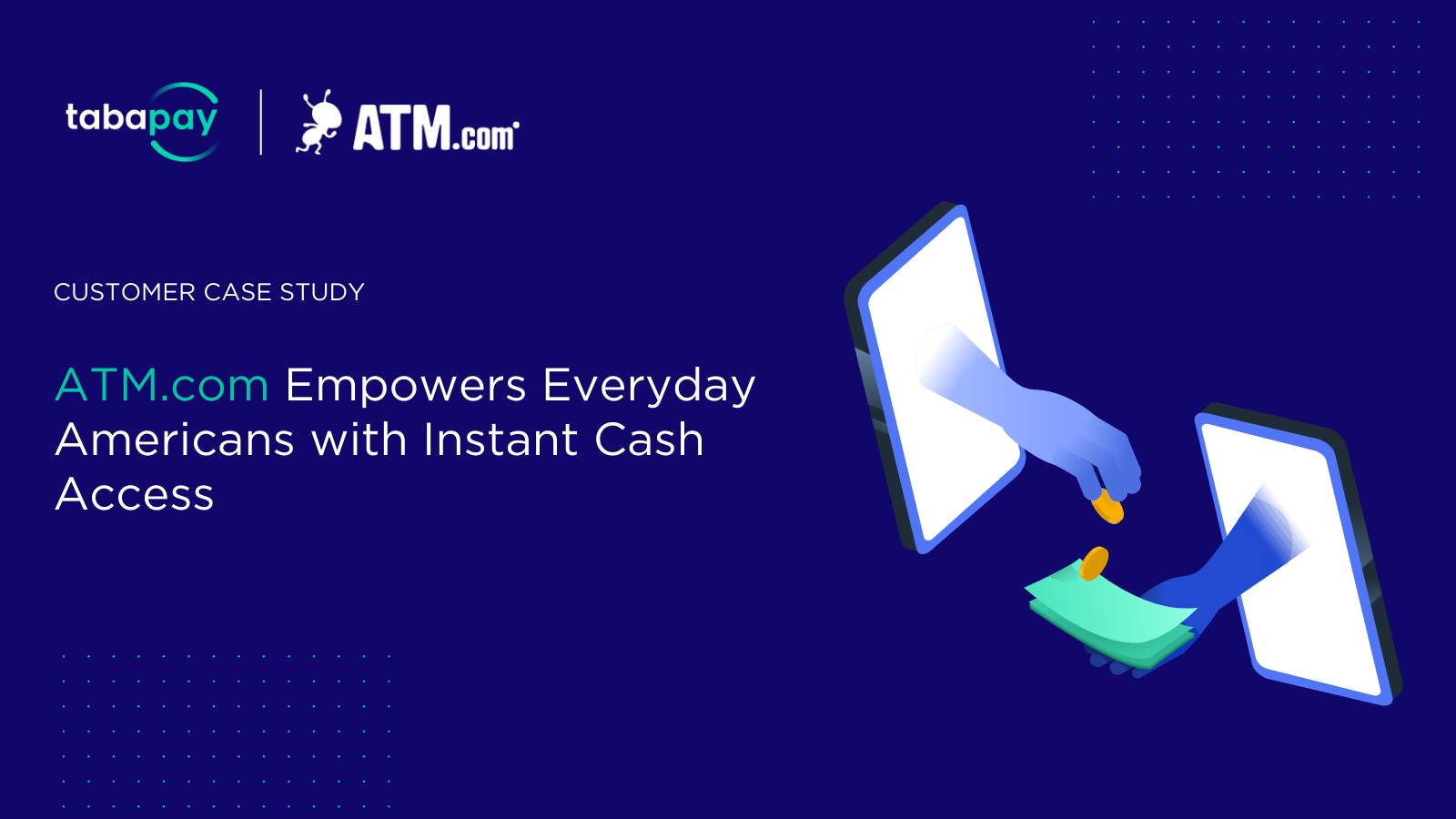If you are working with or in payments, one of the best places to start is Ahmed Siddiqui’s The Anatomy of the Swipe: Making Money Move. The book walks readers through the growth and expansion of Fintech offerings arising from card-based payments while illustrating each party, part, and process within the payments ecosystem. So from Fintech innovators to software developers to merchants and issuers, it’s a great resource and is required reading for all new employees at TabaPay. We were honored that the founding story of TabaPay was a chapter in Ahmed’s book and are proud to have Branch as a client.
The chapter is shared in its original form (with some minor adjustments) and published with permission from Ahmed. If you want to learn more, you can buy the book here
Key Takeaways
- Push-to-Card is a fast and reliable way for people to get money sent to their debit cards.
- This technology is changing the way people get paid.
- There is less reliance on having to know your bank account and routing number to receive money.
Founder Story: Rodney Robinson of Tabapay
In 1997, International Business Machines (IBM) coins the term “eBusiness” and doubles down on its service offerings to enable Internet businesses to conduct real transactions on the Internet. One of its earliest customers was PC Flowers, a company founded by William J. Tobin, who linked FTD’s 25,000 member florists to the Prodigy network. IBM enabled 485,000 Prodigy subscribers to purchase flowers online for the first time by simply keying in their debit or credit card securely over their dial-up Internet connections, and then getting flowers delivered directly to the doorstep of their loved ones. The man leading this charge at IBM was Rodney Robinson.
Rodney then went on to building IBM’s national practice for banking, finance, and securities, where he helped banks offer online bill payment services and built their presence online as the world became more digitized and connected. Here he had to build a depth of experience in payments back when the term “eCommerce” was fairly new and novel. Here he discovered the power of being able to use card-based payments to transact instantly.

“When the transaction was processed, Farmers was able to get an instant confirmation that the money was delivered. This is something that couldn’t be done with traditional ACH.”

After his time at IBM, Rodney went on to product leadership roles at Intuit and a number of tech startups, including Obopay. At Obopay, Rodney and his team were trying to build a Peer-to-Peer technology where people could send money from one flip phone to another flip phone. They inked a deal with Citibank to pilot the program and realized that for this experience to seem instantaneous, they would need to use the card network rails. So, they built a technology that allowed one user to send money from their credit card to another person’s credit card. While the concept was interesting, in practice, they learned later on that this technology was more interesting for fast disbursements from businesses. Farmers Insurance then became a customer and used the technology to pay out claims instantly to service providers like auto repair shops, where money could be moved instantly from Farmers Insurance directly to the auto repair shop’s credit or debit card. The speed of the transaction was eye-opening, moreover, it was the fact that there was the certainty of delivery, which was offered by the card networks. That is, when the transaction was processed, Farmers was able to get an instant confirmation that the money was delivered. This is something that couldn’t be done with traditional ACH.
This experience with Farmers led Rodney to become an entrepreneur and co-found Omney. At Omney, Rodney and his team built the Push-to-Card technology which later went on to become Mastercard Send when it was acquired in 2014. In the early days, Rodney and his team were able to create a transaction that was able to load funds onto a debit or credit card in a manner that looked like an in-store item return, except there wasn’t an original purchase transaction for that return to reference. Later on, Visa, Mastercard, Discover, and American Express all created specific transaction types for this type of transaction also referred to as an “Original Credit Transaction (OCT).”

In 2016, Uber announced its Instant Pay offering to all of its drivers, where their 1099 drivers could get paid out daily within seconds using the Push-to-Card technology. This is the moment where this technology really became mainstream, which also coincided with Visa launching their Push-to-Card offering called Visa Direct.
After selling Omney to Mastercard in 2014, Rodney saw the meteoric rise in usage of the Push-to-Card technology amongst 1099 workers like Uber and Lyft Drivers, but he also saw online short-term lenders using the technology to get money into the hands of its users instantly. The only challenge that these short-term lenders had was the ability to collect back from the user using the same debit or credit card. So, Rodney proposed that Mastercard enable both Push and Pull from the same debit or credit card, but the Pull portion meant that Mastercard would need to become a Merchant Acquirer, and, thus, compete against First Data.
Both Visa and Mastercard, being that they are the networks in the middle, need to maintain their stance as the rails moving data and money between Merchant Acquirers and Card Issuers. Rodney’s proposition became politically difficult for Mastercard to do in-house, so Rodney decided to co-found his next startup, Tabapay.

Rodney built an Acquirer Processor from the ground up, integrating with Visa and Mastercard as the primary networks, but also integrating with secondary networks or regional networks such as Pulse, NYCE, Star, and Accel

The “Taba” in Tabapay stands for “There and Back Again,” and the market that Rodney was trying to build a solution for was for online lenders who were sending money “there” and then eventually needed the funds “back again.” To do this, Rodney built an Acquirer Processor from the ground up, integrating with Visa and Mastercard as the primary networks, but also integrating with secondary networks or regional networks such as Pulse, NYCE, Star, and Accel. The idea was to allow users in need of a loan to receive money to their debit or credit card, and then pay it back using the same debit or credit card. In doing this, Tabapay also can serve as an Acquirer Processor for any eCommerce site as well, but with their unique offering of being able to offer both push and pull from a single card, Tabapay has been able to power most of the leading Earned Wage Access providers.

In addition to this technology, Tabapay also has built a proprietary algorithm to help its Merchants get the lowest possible Interchange. It uses its connections with primary and secondary networks to determine which network will yield the lowest Interchange and route the transaction through there. The reality is that 89 percent of the cost to a Merchant, or in this case, a short-term lender, is the cost of Interchange. It is something that can’t be negotiated down as it is set by the card networks. The remaining 11 percent is the network assessment that goes directly to the card network, which typically cannot be negotiated down either. Finally, the Acquirer fee can get negotiated down based on transaction volume. This is the direct cut that is given to a Merchant Acquirer like Tabapay. However, to be able to lower the total cost of the transaction, you need to be smart about how you route the transaction to get the best possible rate as the rates vary from network to network
An example of this would be if a user was to transact with a Visa Debit card. Tabapay actually has at least three paths where it could route the transaction. The first would be to try running through the Visa’s credit network, second would be to run through Visa’s debit network (usually Interlink), or run on the card’s unaffiliated network (a requirement of the Dodd-Frank Act), which could be something like Pulse, NYCE, or Accel. Depending on which network yields the lowest Interchange, Tabapay will route the transaction through there. In doing so, Tabapay can effectively lower the cost to push or pull funds to the short-term lender through Interchange arbitrage.
As Rodney continued to work with his lending customers, he also realized the need to offer non-card-based options such as ACH. This becomes important in cases where a user takes a loan from the lender on their debit card and then cancels their debit card or “freezes” it. The lender will not be able to pull back the funds because the card is canceled or frozen. Thus, to reclaim funds, the lender needs an alternative that could be pulled back via ACH, which would require the lender to have the account and routing number of the user’s checking account. ACH historically would take two to three business days, but now can be done as a same-day ACH if the transaction is invoked before a certain cutoff time during the day. Another more recent technology called Real-Time Payments (RTP) is a way to send funds instantly, rivaling the speed of Visa Direct and Mastercard Send at a fraction of the cost.
Published with permission from the author.
Ahmed Siddiqui, The Anatomy of the Swipe: Making Money Move (pp. 187-190). New Degree Press.
Read the book here






